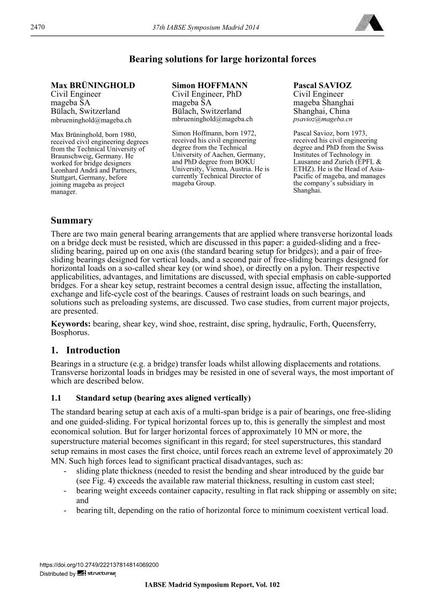Bearing solutions for large horizontal forces

|
|
|||||||||||
Bibliographic Details
| Author(s): |
Max Brüninghold
Simon Hoffmann Pascal Savioz |
||||
|---|---|---|---|---|---|
| Medium: | conference paper | ||||
| Language(s): | English | ||||
| Conference: | IABSE Symposium: Engineering for Progress, Nature and People, Madrid, Spain, 3-5 September 2014 | ||||
| Published in: | IABSE Symposium Madrid 2014 | ||||
|
|||||
| Page(s): | 2470-2477 | ||||
| Total no. of pages: | 8 | ||||
| Year: | 2014 | ||||
| DOI: | 10.2749/222137814814069200 | ||||
| Abstract: |
There are two main general bearing arrangements that are applied where transverse horizontal loads on a bridge deck must be resisted, which are discussed in this paper: a guided-sliding and a free- sliding bearing, paired up on one axis (the standard bearing setup for bridges); and a pair of free- sliding bearings designed for vertical loads, and a second pair of free-sliding bearings designed for horizontal loads on a so-called shear key (or wind shoe), or directly on a pylon. Their respective applicabilities, advantages, and limitations are discussed, with special emphasis on cable-supported bridges. For a shear key setup, restraint becomes a central design issue, affecting the installation, exchange and life-cycle cost of the bearings. Causes of restraint loads on such bearings, and solutions such as preloading systems, are discussed. Two case studies, from current major projects, are presented. |
||||
| Keywords: |
bearing shear key hydraulic restraint Queensferry wind shoe disc spring Forth Bosphorus
|
||||
